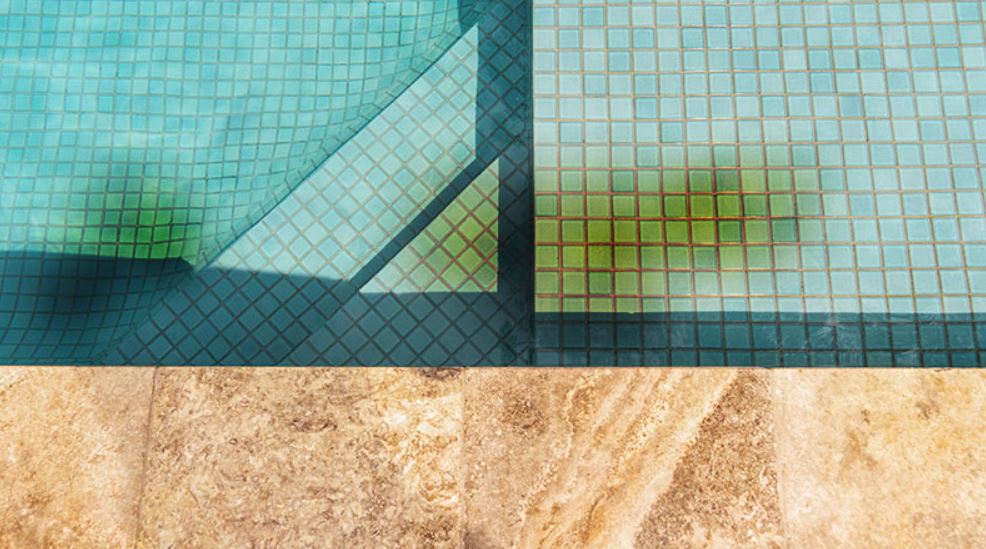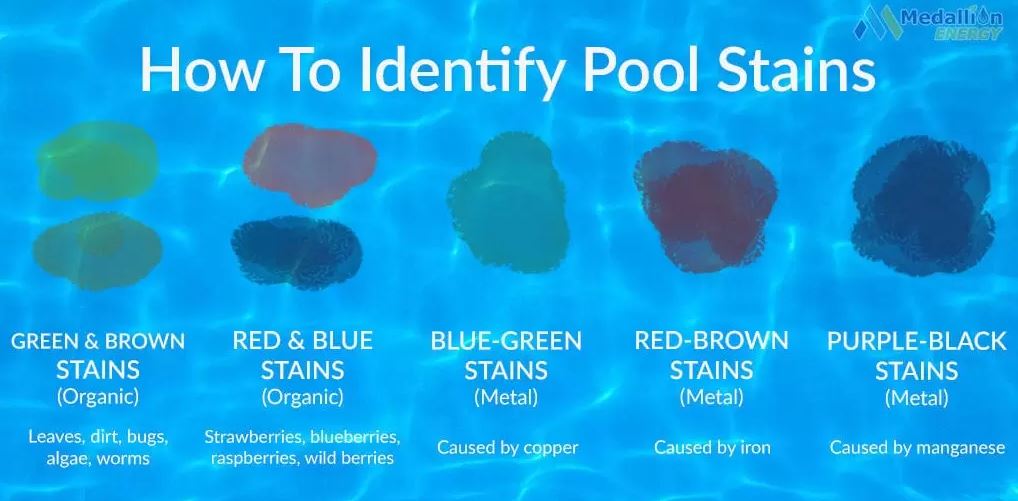Swimming pools are synonymous with leisure and relaxation, but maintaining their crystal-clear allure can be challenging, especially when confronted with unsightly stains. Whether it’s the organic scars left behind by leaves and algae or the stubborn mineral marks from hard water, pool stains are not just eyesores; they can also be a sign of underlying issues. Traditionally, tackling these blemishes has involved many chemicals, but the shift towards eco-friendly methods is gaining momentum as we become more environmentally conscious.
This blog post delves into the science behind eco-friendly pool stain removal, offering a fresh perspective on maintaining your pool’s beauty without compromising environmental values. We’ll explore the various types of pool stains, why traditional chemical methods might be harmful, and most importantly, how eco-friendly alternatives work effectively while being kind to our planet. Understanding the science behind these methods empowers us to make better choices for our pools and contributes to a larger movement of sustainable living. So, let’s dive into the world of eco-friendly pool care and discover how science can help us keep our pools pristine in a more environmentally friendly way.

Types of Pool Stains
Understanding the nature of pool stains is the first step in effective removal. Pool stains typically fall into two categories: organic and inorganic.
Organic Stains are usually brown or green and are caused by natural debris like leaves, algae, or even small animals. These stains are organic and often appear after a storm or during periods of neglect. They are generally easier to remove since they don’t bond strongly with the pool’s surfaces.
Inorganic Stains, however, are often caused by metals like iron, copper, and manganese in the water. These metals can be introduced through tap water, pool equipment, or fertilisers. Inorganic stains range in colour—copper can cause blue or green stains, while iron might leave behind a rusty, brownish hue. These stains are usually more challenging to remove as they can chemically bond with the pool’s surface.
Different stains require distinct approaches for removal. While organic stains might be treated effectively with oxidation, inorganic stains often necessitate specific chelating agents to lift the metal off the pool’s surface.
Traditional vs Eco-Friendly Methods
Traditional pool stain removal often relies on a range of chemicals. Chlorine is widely used for its potent oxidising properties, effectively breaking down organic matter. Other common chemicals include muriatic acid and various metal sequestrants, which help manage inorganic stains.
However, these traditional chemicals pose significant environmental and health risks. Chlorine, for instance, can form harmful byproducts like chloramines, impacting both air and water quality. Prolonged exposure to chlorine has been linked to respiratory issues and skin irritation. Moreover, chemicals like muriatic acid can disrupt the pH balance of the water and the surrounding ecosystem if not handled correctly.
This is where eco-friendly alternatives come in. These methods prioritise environmental safety and health while maintaining effectiveness in stain removal.
Science of Eco-Friendly Stain Removal
Eco-friendly pool stain removal is grounded in scientific principles, focusing on using less harmful substances that are equally effective.
One popular approach is the use of enzymatic cleaners. These cleaners use natural enzymes to break down organic matter, such as leaves and algae, into smaller, more manageable molecules. The enzymes accelerate natural decomposition processes, effectively lifting stains without the harsh side effects of chlorine.
Another eco-friendly method involves using natural acids, like citric acid or ascorbic acid (vitamin C). These acids work particularly well on metal stains. Citric acid, for example, can chelate (bind with) metals, rendering them soluble and easy to filter out of the pool. Ascorbic acid acts similarly, especially effective against iron stains, often lifting them without altering the pool’s pH balance drastically.
A key consideration in eco-friendly methods is the effectiveness in comparison to traditional methods. While traditional chemicals act rapidly, eco-friendly alternatives might require more time to show results. However, the trade-off comes in the form of safety and environmental sustainability. For instance, natural acids and enzymatic cleaners pose minimal risks to swimmers’ health and are more biodegradable, reducing the environmental impact.
Moreover, eco-friendly methods often tackle the root cause of the stains rather than just the symptoms. For example, by addressing the mineral content in the water that causes inorganic stains, eco-friendly methods can help prevent the recurrence of these stains.
Popular Eco-Friendly Pool Stain Removal Methods
Several eco-friendly methods are gaining popularity among pool owners due to their effectiveness and environmental safety.
- Enzymatic Cleaners: These cleaners use natural enzymes to break down organic debris like leaves, suntan, and body oils, preventing stain formation. They are particularly effective against organic stains and are gentle on the pool’s surfaces and swimmers.
- Pros: Non-toxic, gentle on surfaces, improves water quality.
- Cons: Slower acting, less effective on inorganic stains.
- Natural Acids: Substances like citric acid and ascorbic acid are effective against metal stains. They work by chelating the metals, making them soluble in water.
- Pros: Effective on metal stains, does not significantly alter pH balance.
- Cons: May require pH adjustment post-treatment, repeated treatments might be necessary for stubborn stains.
- Vinegar and Baking Soda: A mild solution of vinegar can help with light staining and algae growth. Baking soda can be used for cleaning and maintaining pH balance.
- Pros: Readily available, inexpensive, mild and non-toxic.
- Cons: Limited effectiveness on tough or deep stains.
DIY Solutions and Recipes
Creating your eco-friendly pool stain removers can be simple and effective. Here’s how:
- Vinegar Solution: Mix equal parts of water and white vinegar. This solution can be gently scrubbed on stains for mild cleaning.
- Baking Soda Paste: Mix baking soda with water to form a paste. Apply this to stains, leave for a few minutes, and scrub gently.
Safety Considerations:
- Always wear gloves when handling any cleaning solution.
- Ensure good ventilation if working with stronger natural acids like citric acid.
- Always test a small area first to ensure no adverse reactions to your pool’s surface.

Prevention Tips
Preventing stains is key to reducing the need for intensive cleaning:
- Regular Cleaning: Regular brushing and vacuuming of the pool can prevent debris accumulation.
- Balanced Water Chemistry: Regularly check and maintain pH levels, alkalinity, and calcium hardness to prevent metal stains.
- Use a Pool Cover: When the pool is not in use, covering it can prevent debris from entering.
Future Trends in Eco-Friendly Pool Maintenance
The future of pool maintenance is leaning towards more sustainable practices. Some emerging trends include:
- Automated Cleaning Systems: These systems can be programmed to efficiently clean the pool, reducing the need for chemicals.
- Saltwater Pools: Gaining popularity due to their natural approach to sanitization.
- UV and Ozone Systems: These systems use ultraviolet light and ozone to reduce the need for traditional chemicals.
As explored throughout this post, the shift towards eco-friendly pool stain removal is not just a choice but a necessary step towards sustainable living. The importance of these methods goes beyond just keeping our pools clean; it’s about protecting our health and the environment. While effective, traditional chemicals come with various environmental and health concerns. In contrast, eco-friendly alternatives offer a safer, albeit sometimes slower, solution.
We’ve delved into various eco-friendly methods, from enzymatic cleaners to natural acids like vinegar and citric acid, each with unique advantages and limitations. Adopting such methods ensures a cleaner and safer pool and contributes to a larger movement towards ecological responsibility. Moreover, the DIY solutions and preventive measures we discussed empower pool owners to take control of their pool maintenance environmentally consciously.
The future of pool care looks promising with emerging technologies and methods geared towards eco-friendly maintenance. By staying informed and open to new practices, we can continue improving our pool care approach, ensuring it aligns with our environmental values.
I encourage you, the readers, to adopt these eco-friendly pool stain removal methods. Experiment with the DIY solutions and see the difference for yourself. Your health, your pool, and the planet will thank you. And as you embark on this journey, I invite you to share your experiences and tips. Have you tried any of these methods? Have you discovered other effective eco-friendly solutions? Let’s create a community of conscious pool owners, sharing insights and ideas for a greener and cleaner pool experience.
Together, we can significantly impact one pool at a time.

Leave a Reply